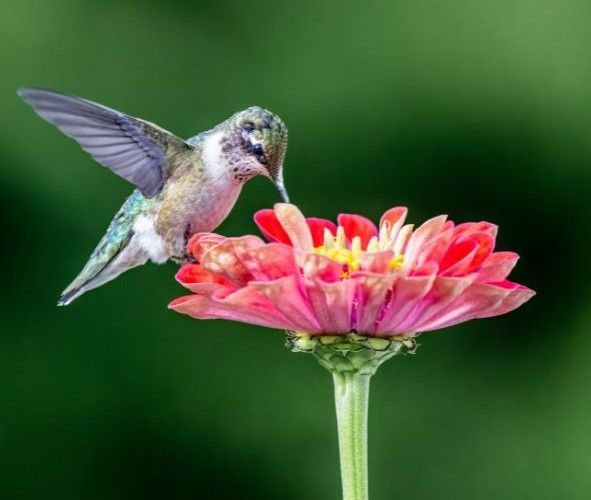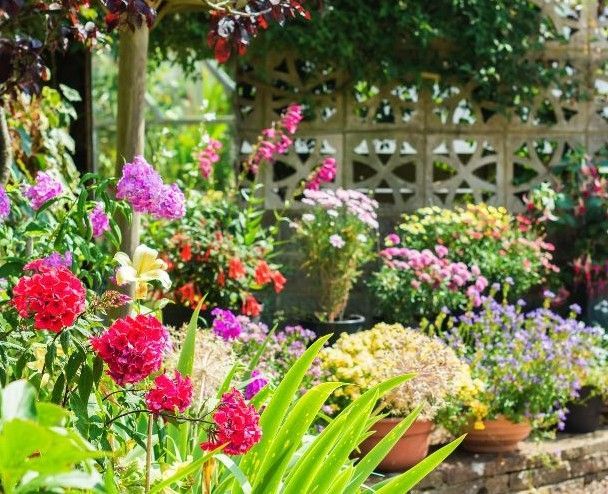Gardening for Pollinators: The Basics
Gardening for pollinators is a great way to not only create a beautiful and vibrant outdoor space, but also to help support important species like bees and butterflies. By planting flowers and other plants that attract pollinators, you can help ensure that these crucial creatures have the food and habitat they need to thrive. Plus, it's a fun and rewarding hobby that can be enjoyed by people of all ages and skill levels. So why not give it a try?
What is a pollinator garden?
A pollinator garden is designed to contain plants that provide food and shelter to animals that include bees, wasps, birds, butterflies, moths, and small mammals (field mice, squirrels, rabbits, bats) that pollinate plants to support the local ecosystem.
Why are pollinator gardens important?
Pollinator gardens are essential for many reasons. Firstly, they provide a habitat for pollinators such as bees, butterflies, and hummingbirds, which play a crucial role in the ecosystem by pollinating crops and wildflowers. These populations are in decline due to loss of habitat and the use of pesticides. Secondly, they promote biodiversity and support a healthy ecosystem by providing food, shelter, and nesting sites for a variety of wildlife. Thirdly, they help to maintain a healthy environment by reducing the need for harmful pesticides and fertilizers, as well as preventing soil erosion and improving air quality. Ultimately, pollinator gardens are a crucial component of a sustainable and healthy ecosystem and are essential for the well-being of our planet.

Are pollinator gardens hard to start?
They are not! The great thing about pollinator gardens is that you can do as little or as much work on them as you want. Whether you have a few feet on your apartment balcony, a backyard, or several acres, anyone can do their part to foster pollinator habitats. Your garden can be a small window box, container, or your entire backyard. Did you know that pollinator gardening is one of the most economical and ecologically sustainable types of gardening? There are three ways you can start:
- From seeds: Starting with seeds you’ve saved or purchased does require a little more prep work as you need to remove any plants or vegetation currently in the desired space.
- Using transplants: There are two kinds of plants available for transplant: full-size plants or plugs. Plugs are inexpensive, young plants in small two-inch tubes that you can buy in bulk. If planting a large area, using plugs or seeds is the way to go. Full-sized plants require less time and resources to achieve a well-balanced pollinator garden, but they can be pricey.
- Online offers: Look around online for offers from organizations that support pollinator gardens. Many offer resources in the way of discounts, free seeds, or plants to help support the start of a pollinator garden.
How to start planning your pollinator garden
1. Choose your location
Flowering plants can grow in shade and sun, so first consider the preferences of the pollinators in your area. Butterflies and other pollinators like to bask in the sun and some of their favorite wildflowers grow best in full or partial sun with some protection from the wind. However, pollinators such as bats and other small mammals may prefer night-flowering plants, or plants that flower close to the ground.
2. Soil type and sunlight
Take a look at your soil-- is it sandy and well-drained, or clay-like and wet? Pennsylvania’s DNC suggests you observe the plants that are thriving (or struggling) in your space to understand more about the soil you have. The soil type and the amount of sunlight will help determine the kinds of plants you can grow. Most need an area that gets at least six hours of sun per day.
3. Choosing your plants
Research which types of milkweed and wildflowers are native to your area and will do well in your soil conditions and sunlight. Pollinator gardens that contain mostly native wildflowers that grow in a variety of conditions are usually easy to maintain and tend to be hardier, though non-native plants will also support local wildlife. Do not choose plants that have been treated with pesticides, insecticides, or neonicotinoids. You’ll also want to focus on selecting perennials to ensure your plants come back each year and don’t require a lot of maintenance.
4. Seeds versus plants
We talk a little about this above, once you have identified your chosen plant species, you will need to decide whether to use seeds, plugs, or full-sized plants. All are good options, but your choice will depend on your timeline and budget. Seeds are more economical, especially for larger gardens, but will require more time and resources. If you’re using seeds, plan on dispersing them in the fall or late winter ahead of your summer growing season. This gives the seeds time to germinate. Plugs are both economical and easy to grow, however it will still take a season or two for them to be fully effective. Nursery-started and full-size plants cost more but will generally give you a quick return on your investment and bring pollinators into your yard during the same growing season.

Conclusion
Planting a garden for pollinators is an excellent way to help the environment. Pollinators, such as bees, butterflies, and hummingbirds, play a crucial role in our ecosystem. They help pollinate plants, which is necessary for the growth of fruits, vegetables, and other crops. By planting a garden that is rich in nectar and pollen, you provide a habitat and food source for these vital creatures. In turn, you help ensure that these pollinators continue to thrive, which benefits both the environment and our food supply. Additionally, planting a garden for pollinators can also help improve air quality, reduce soil erosion, and create a more beautiful and vibrant landscape. So, if you're looking for a simple and effective way to make a positive impact on the environment, consider planting a garden for pollinators.
Next in our Gardening for Pollinators series, we will talk about what to plant to attract butterflies and moths. Stay tuned!
Check out the latest:









